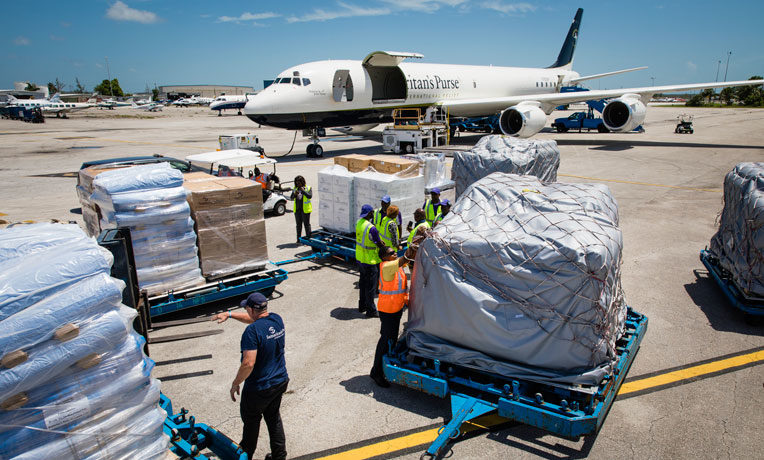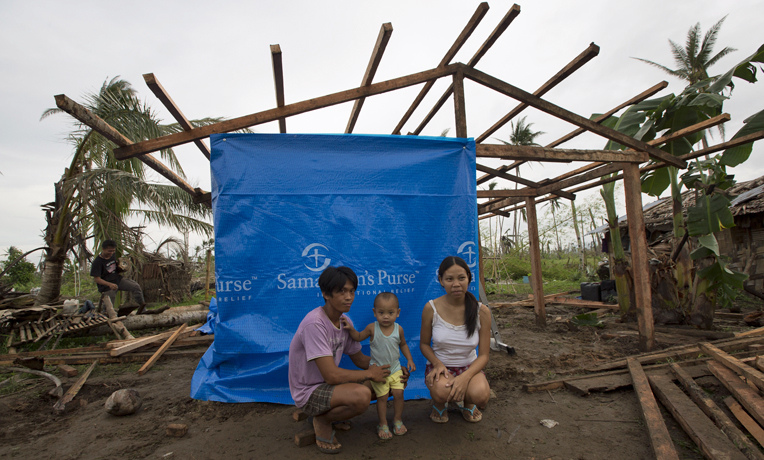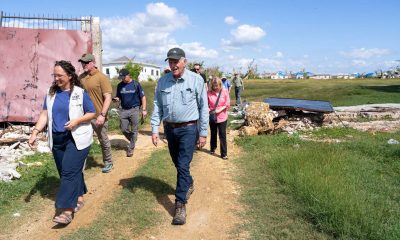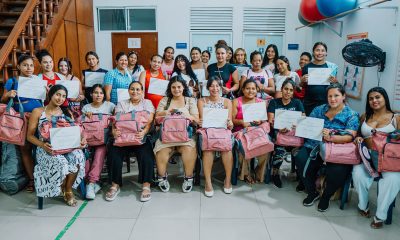Samaritan’s Purse provides thousands of transitional shelters to families in the Philippines who were left homeless by Super Typhoon Haiyan.
 Rian Abenojar picked up a hammer, grabbed a handful of nails, and went to work on his new transitional shelter provided by Samaritan’s Purse. Pounding echoed across the lush green valley as he fastened blue tarp to a stick frame of coco lumber when suddenly an unexpected sound rang out: laughter.
Rian Abenojar picked up a hammer, grabbed a handful of nails, and went to work on his new transitional shelter provided by Samaritan’s Purse. Pounding echoed across the lush green valley as he fastened blue tarp to a stick frame of coco lumber when suddenly an unexpected sound rang out: laughter.
Rian had swung and missed badly on a nail. But instead of grimacing in embarrassment, all he could do was smile.
Help Disaster Victims Around the WorldRelief had finally settled in where there was once pain for this husband and father. He knew that just a few more hours of pounding nails would give his family a new home and a good night’s rest.
After Rian’s home was destroyed by Typhoon Haiyan, he built a transitional shelter with tools and supplies from Samaritan’s Purse.
Six weeks earlier, Super Typhoon Haiyan slammed into the Philippines. With sustained winds of 195 miles per hour and storm surges of more than 20 feet, Haiyan is considered one of the fiercest storms ever recorded. It killed more than 6,000 people and robbed 4 million families of their homes.
Blown Away
Rian, his pregnant wife, and their young son scrambled for safety under a table in their modest home when Haiyan first made landfall. But eventually the relentless wind and rain overwhelmed the simple structure, forcing the family to run for their lives to a neighbor’s house.
When they finally emerged hours later, everything they owned had been blown away and life had drastically changed.

The typhoon left four million people homeless, and many also lost their jobs.
“The storm was so strong,” Rian said. “We were shocked and afraid because all of the surroundings were wiped out.”
The Abenonjars picked up the scattered pieces of their lives and continued on as best they could, but it was difficult. The fields Rian helped farm were completely flooded out and the family, along with most of their community, had nothing but rice to live on for two weeks.
A sign of renewed hope arrived one week later when Rian’s wife gave birth to their second child, a healthy son they named Jhan Rian. But it was hard to care for a newborn in the aftermath of the disaster.
“There was no medicine, no food, no milk,” Rian said. “It was difficult, but God was watching over us and protecting us.”
Just when things seemed most bleak, Samaritan’s Purse showed up with a full shelter kit, which included metal roofing sheets, tarp, and framing materials. An accompanying tool kit with hammers, nails, and a shovel was also provided for multiple families to share.
“We’re focusing on the communities of Santa Fe, Tanuan, and Palo now,” said project coordinator Randy Miller. “By providing families with supplies and materials, they can construct the shelter they need for themselves.”
Building for the Future
In recent weeks, more than 4,000 families have received kits, and future distributions should increase the total to 20,000 families. Some local residents are helping to rebuild these homes in a special way.

There was little food in the community for the first couple of weeks, and without jobs, people couldn’t buy anything anyway. Samaritan’s Purse started a program that paid men for cutting up coconut lumber.
Samaritan’s Purse is employing teams of skilled Filipino workers who are cutting and milling lumber from fallen palm trees. They earn a needed wage, and the planks of wood are used in our shelter kits. Over time, we plan to add another 20 to 30 cutters to our shelter program to help keep up with the need for these transitional structures.
“The homeowners will be able to add on to these structures without starting over,” outgoing project coordinator Kenny Estelle said. “They can remove the tarp and build more permanent walls. They can even expand on the existing framework.”
The use of coco lumber is by design as well. Thousands of coconut trees were destroyed as Haiyan ripped across the island nation. Any trees left lying on the ground will rot in six months or less. Those that are decapitated but have been left standing are already dead. Cutting these trees for lumber maximizes the use of existing timber while helping clean up storm debris.

At least 20,000 families will receive shelter kits from Samaritan’s Purse. For Rian, the supplies will provide a much needed shelter for his wife and newborn.
As with any of our disaster relief projects, Samaritan’s Purse has made sure to partner with officials and local residents to coordinate our efforts.
“Coco wood is very regulated here,” Kenny said. “We needed to go through the local government, register every chainsaw, and get the permission of every landowner.”
Many neighbors are happy to help. In fact, one nearby landowner donated eight coconut trees, which can usually be sold for around 200 pesos each.
A new home and a new baby are not the only changes in Rian’s life. He has also taught himself a new trade to take the place of farming—and it was only possible because of Typhoon Haiyan. Rian is making oil from all of the coconuts that can be found lying around.
“God is good,” Rian said. “Even in the storm He has given us this blessing.”







